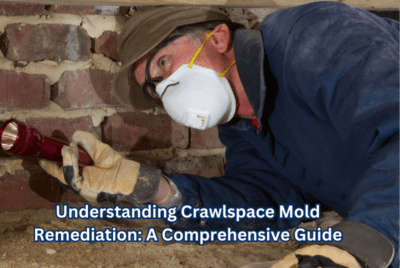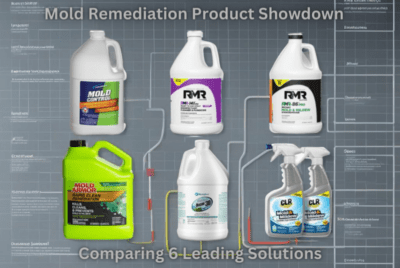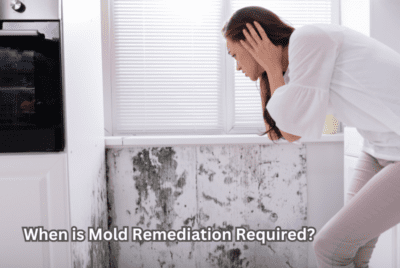Air Purifier vs Humidifier: Choosing the Right Device for Your Indoor Environment
As someone who is concerned about maintaining a healthy indoor environment, I often come across the question of whether to use an air purifier or a humidifier. Both devices have their own benefits and risks, and understanding them is essential for making an informed decision. In this article, I will delve into the world of air purifiers and humidifiers, exploring their respective advantages and disadvantages. Additionally, I will address the relevance of these devices in mold remediation and offer helpful suggestions to assist you in choosing the right device for your specific needs.
| Key Takeaways |
|---|
| 1. Air Purifiers vs. Humidifiers: Understand the differences between these devices and their respective roles in mold remediation. |
| 2. Air Purifiers for Cleaner Air: Utilize HEPA filters and proper placement to effectively capture mold spores and allergens for improved indoor air quality. |
| 3. Humidifiers for Optimal Humidity: Maintain humidity levels between 30% to 50% and regularly clean humidifiers to prevent mold growth while promoting healthier skin and respiratory health. |
Understanding Air Purifiers
Air purifiers are devices designed to improve indoor air quality by eliminating contaminants such as dust, pollen, pet dander, and harmful particles. They work by using various technologies, including filters, electrostatic precipitators, or ozone generators, to capture or neutralize airborne pollutants. The most common and effective type of air purifier is one that utilizes High-Efficiency Particulate Air (HEPA) filters, capable of trapping particles as small as 0.3 microns.
Understanding Humidifiers
Humidifiers, on the other hand, are devices that add moisture to the air to increase humidity levels in indoor spaces. They are particularly useful in dry climates or during winter months when heating systems can cause the air to become excessively dry. Humidifiers come in different types, such as evaporative, ultrasonic, or steam-based, each with its own method of dispersing moisture into the environment.
Benefits of Air Purifiers
Air purifiers offer several notable benefits when it comes to improving indoor air quality:
- Improved Indoor Air Quality: By effectively capturing and filtering out allergens, dust, and pollutants from the air, air purifiers significantly enhance the overall indoor air quality. This can be particularly beneficial for individuals with respiratory conditions, allergies, or sensitivities.
- Allergen and Pollutant Removal: Air purifiers with HEPA filters are highly efficient in removing common allergens such as pollen, pet dander, and dust mites. They can also eliminate harmful particles, including volatile organic compounds (VOCs), smoke, and odors, creating a healthier living environment.
- Respiratory Health Improvement: Cleaner air can have a positive impact on respiratory health, reducing the risk of respiratory infections, asthma attacks, and other respiratory-related issues. By removing airborne irritants, air purifiers can provide relief for individuals with asthma or other respiratory conditions.
Risks of Air Purifiers
While air purifiers offer numerous benefits, it’s essential to consider their potential risks as well:
- Ozone Emission: Some types of air purifiers, such as ozone generators, emit ozone as part of their purification process. Ozone can be harmful to the respiratory system, especially when present in high concentrations. It’s crucial to choose air purifiers that do not generate ozone or have low ozone emission levels.
- Noise Levels: Certain air purifiers can produce noise, especially when operating at higher fan speeds. This can be a concern if you’re sensitive to noise or if you plan to use the device in bedrooms or quiet spaces. Opting for air purifiers with adjustable fan speeds or quieter operation can help mitigate this issue.
- Maintenance and Cost: Air purifiers require regular maintenance, including filter replacements and cleaning. Depending on the model and brand, filters may need to be replaced every 6 to 12 months. It’s important to factor in the ongoing cost of replacement filters and ensure you can commit to the necessary maintenance for optimal performance.
Benefits of Humidifiers
Humidifiers offer several advantages in maintaining a comfortable and healthy indoor environment:
- Moisturized Air: Humidifiers add moisture to the air, which can alleviate dryness in the skin, eyes, and respiratory passages. This is especially beneficial during the winter months when indoor heating systems can cause the air to become excessively dry.
- Relief from Dry Skin: Dry air can lead to dry and itchy skin. By increasing humidity levels, humidifiers help keep the skin moisturized, reducing discomfort and promoting healthier skin.
- Sinus and Allergy Relief: Adequate humidity levels can alleviate sinus congestion and promote easier breathing, especially for individuals suffering from allergies or sinus-related issues. Humidifiers can provide relief from symptoms such as nasal congestion, sore throat, and coughing.
Risks of Humidifiers
While humidifiers offer benefits, it’s crucial to be aware of potential risks associated with their use:
- Mold and Bacteria Growth: Humidifiers introduce moisture into the air, creating an environment that is conducive to mold and bacteria growth. If not properly maintained, humidifiers can become breeding grounds for these microorganisms, leading to indoor air quality issues and potential health risks. Regular cleaning and disinfection of humidifiers are essential to prevent mold and bacteria growth.
- Over-humidification: Excessive humidity levels can promote the growth of mold and mildew, as well as create a damp environment that attracts dust mites and pests. It’s important to monitor humidity levels and ensure they remain within the recommended range (around 30-50%) to prevent these issues.
- Regular Maintenance: Like air purifiers, humidifiers require regular maintenance, including cleaning and disinfection. Neglecting proper maintenance can lead to the accumulation of mineral deposits or bacteria, compromising the performance and cleanliness of the device.
Mold Remediation
When it comes to mold remediation, both air purifiers and humidifiers can play a role in creating a healthier environment. However, it’s essential to understand their specific functions and limitations.
Importance of Clean Air
Clean air is vital for maintaining a healthy living space, especially when dealing with mold. Mold spores are airborne and can exacerbate respiratory conditions and allergies. By using appropriate devices, you can help reduce the presence of mold spores in the air and minimize the risk of mold-related health issues.
Choosing the Right Device
Selecting the right device depends on your specific needs and the nature of the mold problem you’re facing. Consider the following factors when choosing between an air purifier and a humidifier:
- Evaluate Your Needs: Assess the indoor air quality and identify the primary issues you want to address. If you’re primarily concerned about airborne allergens and pollutants, an air purifier may be more suitable. On the other hand, if dryness and low humidity levels are contributing to skin and sinus issues, a humidifier can help.
- Consider Room Size: Determine the square footage of the area you want to treat. Different devices have varying coverage capacities, so it’s important to choose one that can effectively purify or humidify the space.
- Noise Levels and Features: If noise is a concern, opt for devices with quieter operation or adjustable fan speeds. Additionally, consider features such as air quality sensors, automatic modes, or timers that enhance convenience and efficiency.
Using Air Purifiers for Mold
Air purifiers can assist in mold remediation by removing mold spores and other airborne particles. Here are some tips for using air purifiers effectively:
- HEPA Filters and Activated Carbon: Look for air purifiers with HEPA filters, as they are highly efficient in capturing small particles like mold spores. Activated carbon filters can also help eliminate odors associated with mold growth.
- Regular Filter Replacement: To maintain optimal performance, regularly replace the filters as recommended by the manufacturer. This ensures that the air purifier continues to effectively capture mold spores and other pollutants.
- Proper Placement: Position the air purifier in areas prone to mold growth or where mold remediation is taking place. Placing it in the central part of the room allows for better air circulation and more efficient purification.
Using Humidifiers for Mold
Humidifiers can be beneficial in maintaining appropriate humidity levels. Here’s how to use humidifiers effectively:
- Maintain Optimal Humidity Levels: Keep the humidity levels between 30% and 50% to inhibit mold growth. Use a hygrometer to monitor the humidity and adjust the humidifier accordingly.
- Clean and Disinfect Regularly: Clean the humidifier regularly to prevent the buildup of mold, mineral deposits, or bacteria. Follow the manufacturer’s instructions for cleaning and disinfection to ensure proper maintenance.
- Monitor Humidity Levels: Continuously monitor the humidity levels in the room to prevent over-humidification. High humidity can promote mold growth, so adjust the humidifier settings accordingly.
Conclusion
In the battle against mold, both air purifiers and humidifiers have their roles to play. Air purifiers effectively remove mold spores and other airborne particles, improving overall air quality. Humidifiers help maintain appropriate humidity levels, preventing the conditions conducive to mold growth. To achieve the best results, it’s crucial to choose the right device based on your specific needs, properly maintain it, and follow the recommended guidelines for mold remediation.
FAQs
1. Can an air purifier completely eliminate mold spores from the air?
- While air purifiers with HEPA filters can significantly reduce the presence of mold spores in the air, it’s essential to address the root cause of mold growth and implement proper mold remediation practices.
2. Are ozone-generating air purifiers safe to use in mold remediation?
- Ozone-generating air purifiers should be used with caution in mold remediation. While ozone can help eliminate odors and kill mold, high levels of ozone can be harmful to human health. It’s recommended to consult with professionals and follow industry guidelines when using ozone-generating devices.
3. Can a humidifier prevent mold growth?
- Humidifiers alone cannot prevent mold growth. In fact, if not properly maintained, humidifiers can contribute to mold growth by creating an environment with excessive humidity. It’s important to maintain optimal humidity levels and implement other mold prevention measures, such as proper ventilation and moisture control.
4. How often should I clean my humidifier?
- Humidifiers should be cleaned regularly to prevent mold and bacteria growth. Follow the manufacturer’s instructions for cleaning frequency and proper cleaning procedures. In general, it’s recommended to clean and disinfect humidifiers at least once every one to two weeks.
5. Can using both an air purifier and a humidifier be beneficial?
- Yes, using both an air purifier and a humidifier can be beneficial in creating a healthier indoor environment. The air purifier helps remove airborne mold spores and other pollutants, while the humidifier helps maintain appropriate humidity levels to prevent dryness and inhibit mold growth. However, proper maintenance and monitoring of both devices are essential for optimal effectiveness.
Remember, when dealing with mold, it’s crucial to consult with professionals for a comprehensive assessment and remediation plan. Air purifiers and humidifiers are supplemental tools that can assist in creating a healthier indoor environment, but they should not be solely relied upon as a solution for extensive mold problems.




